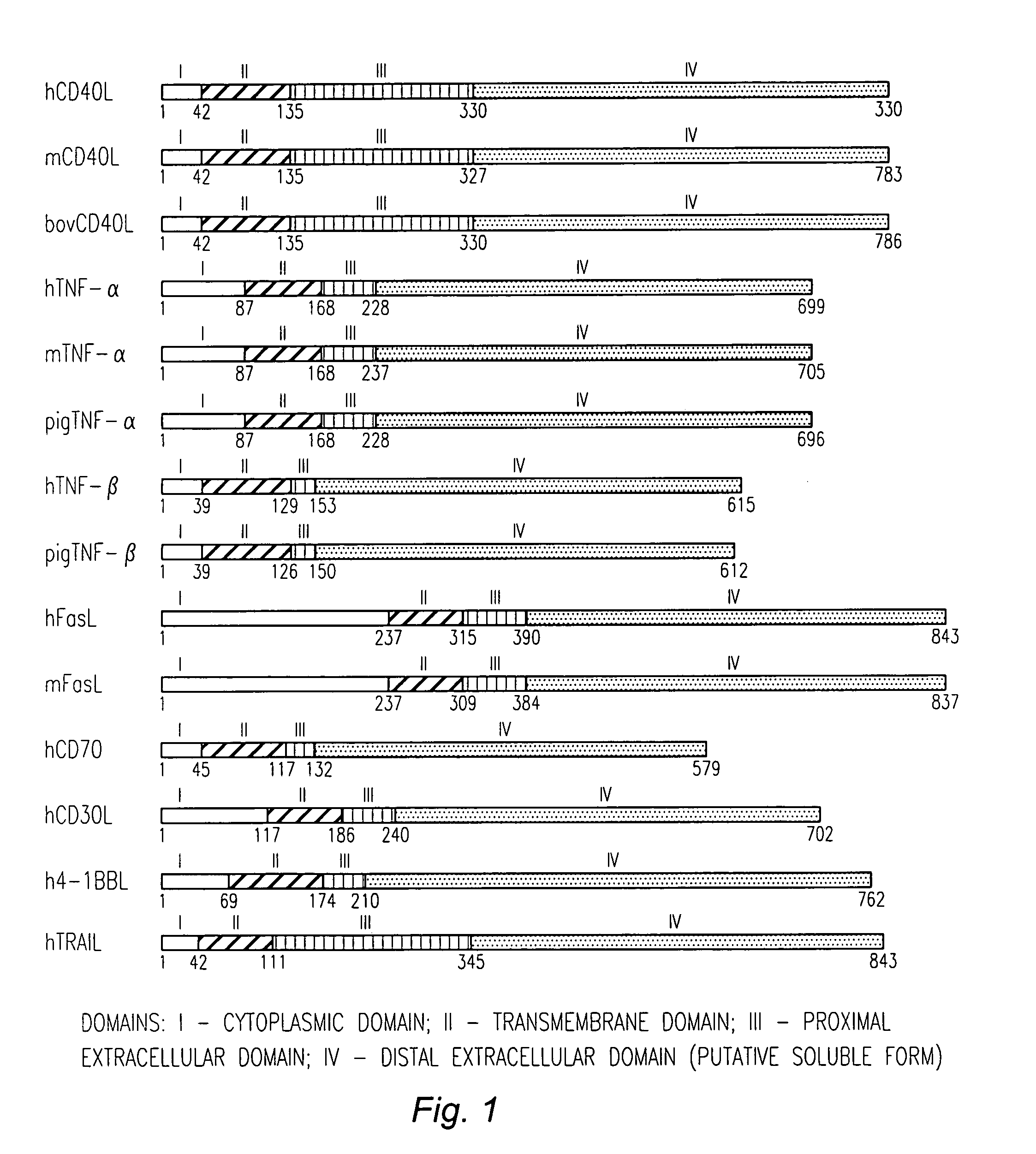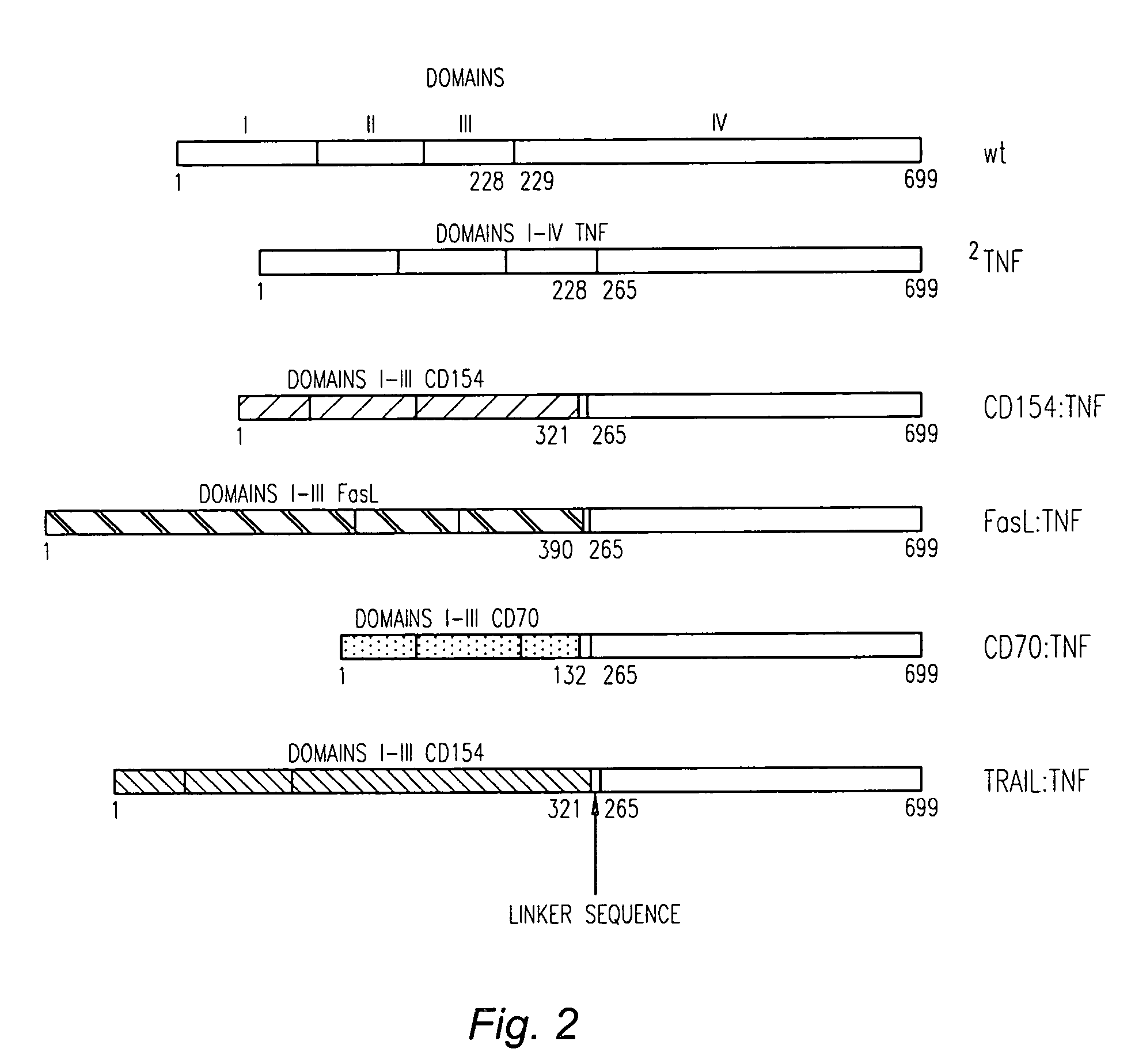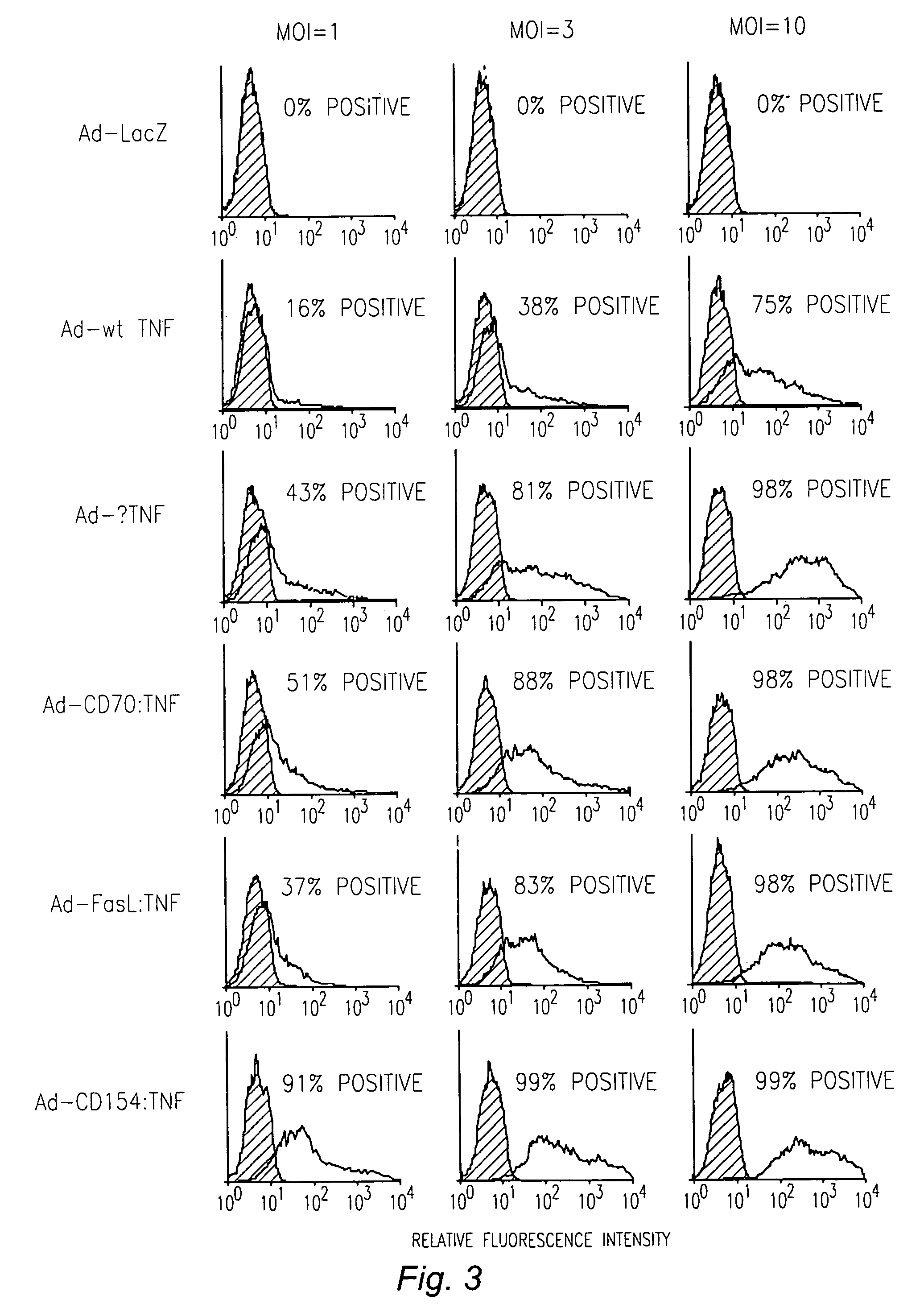Nucleic acid molecules encoding TNF-α ligand polypeptides having a CD154 domain
a technology of ligand polypeptides and nucleic acids, which is applied in the field of nucleic acid molecules encoding tnf- ligand polypeptides having a cd154 domain, can solve the problems of inability to achieve high local expression of tnf, inability to transfer even wild-type (wt) tnf gene transfer, and inability to cure most cancers. the effect of reducing the risk of cleavag
- Summary
- Abstract
- Description
- Claims
- Application Information
AI Technical Summary
Benefits of technology
Problems solved by technology
Method used
Image
Examples
Embodiment Construction
[0073]All cited references are incorporated by reference, including any drawings, as if fully set forth herein.
I. DEFINITIONS
[0074]As used herein, the term “chimeric TNFα” refers to a ligand comprised of at least one domain or subdomain of TNFα and at least one domain or subdomain of another TNF ligand other than TNFα.
[0075]As used herein, the term “subdomain” refers to a sequence of at least two amino acids that is part of a domain of a TNF ligand. A “subdomain” also encompasses an amino acid sequence from which one or more amino acids have been deleted, including one or more amino acids truncated from an end of the sequence.
[0076]As used herein, the term “cleavage site” and “mmp recognition site” refer to a sequence of amino acids that is recognized by proteases, typically matrix metalloproteases (mmp), such as TNFα converting enzyme (TACE), that cleave TNFα from the surface of the expressing cell. TACE has been found to release sTNFα by cleaving pro-TNF between amino acid residue...
PUM
| Property | Measurement | Unit |
|---|---|---|
| densities | aaaaa | aaaaa |
| densities | aaaaa | aaaaa |
| pH | aaaaa | aaaaa |
Abstract
Description
Claims
Application Information
 Login to View More
Login to View More - R&D
- Intellectual Property
- Life Sciences
- Materials
- Tech Scout
- Unparalleled Data Quality
- Higher Quality Content
- 60% Fewer Hallucinations
Browse by: Latest US Patents, China's latest patents, Technical Efficacy Thesaurus, Application Domain, Technology Topic, Popular Technical Reports.
© 2025 PatSnap. All rights reserved.Legal|Privacy policy|Modern Slavery Act Transparency Statement|Sitemap|About US| Contact US: help@patsnap.com



